How to choose a camera: We have over 100 years of combined photographer knowledge. Let’s get some advice about where to purchase the right cameras for your needs. We will help you determine the very best camera to capture photographs in the world. We’re very happy to show you the possible ways of taking photos in 2021. Read this guide to decide what camera you want.
Speed and performance
Most modern cameras below the $600 mark have plenty of automatic focus for casual use. DSLRs and mirrorless cameras are often more effective at rendering than compacts and bridge cameras. Only the expensive models offer very high FPS (anything over 5) cameras with high FPS are typically around $1,000. The camera cost about $500 and is equipped with a 10-fps battery. Lastly, the overall speed of the camera will affect the quality and functionality of the camera equipment. You need to spend quite a bit of money on a compact camera to match the speed of a larger model. You can find out more about our review from our review of this article click here.
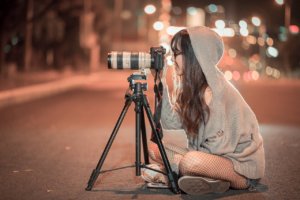
Size and Ergonomics
The size of a camera and how it feels inside your hand are a rarely-discussed but crucial element of any photography device. Cameras – small or compact – are not suitable for larger fingers or large hands with low reflexes. It determines the ergonomic feel of the camera hand in addition for the location of the camera button. Sometimes a camera will feel comfortable when held but its controls are too close to each other. What is considered grand for the average amateur will seem little for the professional. I like a larger compact camera suited for my large hands. I like mirrorless models with better grip which tends to make them bigger.
Price (value for money)
If you want something with an image quality comparable to most modern smartphones there must be at least $500 for a brand new camera. If you’re buying older models you get good value for your money. I still advise invest in latest models if this makes a case. Buy new cameras have a life of ‘shutter time’ based on the number of pictures taken and replacement parts can be cost effective. Most camera bundles typically have some camera accessories which you’ll likely never use… or are small specifications and will break down after a few uses or two. When you have more money, you should invest on new lenses to increase your possibilities.
Sensor size
Digital cameras use sensors in the camera to capture ‘images’. There are various types of sensors that can be found for each type of camera. The bigger the sensor the higher quality of the image especially in poor light. APS-C sensors multiplied your lens’ optical length. It’s perfect for shooting subjects that are far apart since you will get more reach on the lenses you own. If you have the budget, a Full Frame camera is a wonderful investment though remember the full-frame optics are also extra expensive. Here Canon and Sony provide the broadest selection of lenses for DSLR’s, but the least for their mirrorless cameras in 2021.
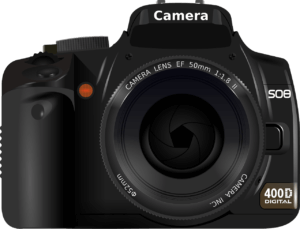
What do you like to photograph?
Let me tell you what photos you like. All these subjects and photography categories have their own challenges. Knowing the type of subjects that are being photographed can help you narrow down the selection of a photographer’s target. You definitely already have another Smartphone but also want one which is a step up. Have an interesting view at this list of photographic subjects below, in which I’ll also add some suggestions for the ideal camera for these needs. In the current era, there are five major categories: smartphones laptops tablets phones and mobiles. You can also buy the Kindle Fire 6 and Kindle Fire 7.
From point-and-shoot to DSLR and mirrorless here’s what you need
Modern camera are so varied and advanced that buying one is probably not a one-size-fits-all decision. Basic point- and-shooter cameras no longer appeal to mass consumers and manufacturing companies have responded by upgrading efforts to higher end models. For better quality a sophisticated compact system is the choice. The name Mirrorless comes from the fact these cameras don’t have mirrors like a DSLR and they don’t have an optics viewfinder. It’s the one constant in the camera. Ruggedized and waterproof photography products are a niche class of photography designed for a day on the beach.

RAW vs. JPEG
Most digital cameras shoot in JPEG mode right away. High-end camera products offer the ability to capture in RAW image. RAW images record full data that you get off your camera’s sensors without throwing them around like JPEG images. RAW files typically are 4 times bigger than high-quality JPEGs but provide higher flexibility during postproduction. You should keep a large memory card and a hard drive able to save data when editing your photos. Click here for more information about the camera’s memory card at the end of the page.
Shooting modes
Advanced compacts and interchangeable lens models give you dramatically improved control over your photographs using the manual exposure modes, there are a multitude of camera settings to lean and use.. This camera still includes auto modes so look for a camera that offers manually controlling the camera. Compact and newer lenses will provide better control over the image in manual mode. The best camera with manual control is a compact camera with a wide-angle lens and a long-range range of camera lens. The cameras can take advantage of a wide range from portrait and landscape pictures.
Wi-Fi and GPS
Wi-Fi is almost a required accessory in a modern camera given the dominance of social media. GPS helps locate photos and allows you to track where they came from. Some camera makers have optional GPS software on the camera. When the GPS button is switched on battery drains dramatically faster so don’t use that device when you don’t need it. The apps generally are basic but get the job done with basic tools that connect and transfer the cameras wirelessly. Can I post a picture to YouTube or Instagram?
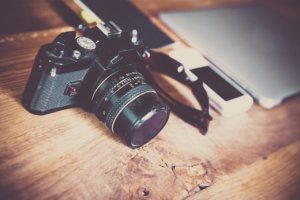
How to choose a camera: Image Quality
These are normally affordable mid-range high-resolution zoom lenses with slow, variable aperture that can be used with varying cameras and modes as standard. I recommend you buy a kit lens with good sharpness in the first half of your camera before it goes too well in the first half. The higher the price of an image the better overall image quality increases at around a $1,000 mark. From this price upwards any improved quality of images becomes vague, except in low light. In total there will be no issues with the quality of images you take when using any digital camera.
Video performance
Digital cameras take a good number of video and some of them can be viewed in full 4K Ultra HD quality. With interchangeable lenses the product is not difficult getting quality videos that rival the best YouTubers and short filmmakers. When shopping for a camera to shoot videos make sure you ask honest questions about yourself. Would you be using DSLR cameras like a camera for family photography if you can just take a video while your sons play? Are smartphones your primary devices? IPhone 4K can already film in high quality as I really feel no sense of necessity.
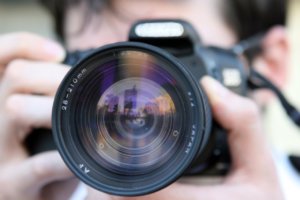
Camera brands
The brand of your camera does not affect the quality of the pictures. Each brand offers different lenses native to its product range to change the image to give you the best shot. Some brands only develop APS-C cameras while most only produce mirror-less versions. Canon & Nikon are the two main camera brands of the industry. They are Canon / Nikon. Nikon and Canon are the two major companies in the camera segment and Nikon is the most popular brand to choose. Nikon, Canon and Nikon, are a series of lenses which are useful for taking pictures of a subject.
Fujifilm
Fujifilm is probably most known for its camera instants and films. The X-series camera features a retro retro-inspired look as well as ‘film simulation.’ They also produce medium format cameras (larger than full frame) but do not produces anything incorporating an. They have excellent lenses though they’re not as good as Sony’s variety. The aesthetics on the Fuji camera make this business worthwhile – their camera look and feel wonderful have earned legions of loyal fans. New models appear multiple times a year but start at a slightly lower price than those made for Sony.
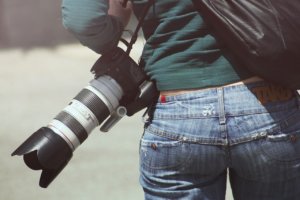
Canon
Canon is known for its huge array of lens options. The holy grail is any lens which has the classic ‘red circle’ also known as the L-series lens. For beginners there is a wide range of affordable lenses starting in less than $100. You can get an excellent camera at $500. One area in which Canon is playing catch-up is mirrorless: their first fullframe mirrorless model was released relatively recently. It ‘d be helpful for those looking for something compact and a DSLR. If a professional or has deeper pockets, their mirrorless R-series cameras are also a good choice.
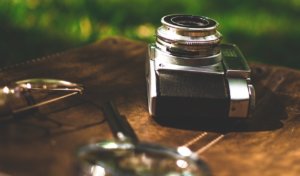
Nikon
Nikon focuses on all photographers ranging from beginners to experts to powerful flagship lenses. There is a wide range of Nikon cameras, most popular is compact – and DSLR. A great deal is provided for beginner photographers – most have framed lenses – with prices starting at just $100. Nikon’s entry into full frame mirrorless was relatively recent (2018) and body and lens selection is limited and expensive. This is a good DSLR for beginners from Nikon. You can also go with the mirrorless cameras of this Z-series series.
Do you want the option of upgrading later?
A simple camera with a fixed lens won’t give you more options. If you choose a compact camera as a starting point you can use it as another backup later. Mirrorless cameras and DSLRs will help you upgrade and gain new lenses filter lenses etc. And also if you wish to start small and develop your learning curve choose one of these option. A mirrorless camera or a DSLR is the most reliable way. The camera gives you the opportunity to add other component or upgrade later so it’s not a whole waste of a camera that you will use as a backup.
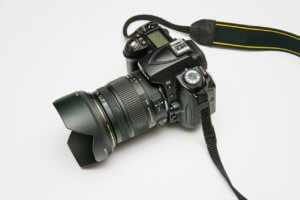
How big are your hands?
If you want to purchase digital cameras online for photography then don’t be too late. Make a shortlist of three or four you consider and go to real camera stores. Have a photo at the cinema! Someone that mainly sold cameras. So after you have all your shortlisted lenses out there you have good reason to decide. You don’t want to do all the research choose what’s good on paper only for the one which arrives but it’s too big for you. Are your hand tools so tight that you want to stop typing when you can’t reach the buttons?
What brand of camera do most of your friends use?
If most of your photo enthusiasts take Canon lenses you should never borrow and share lenses unless you are choosing the Nikon. Lenses specifically designed for crop sensor cameras are not compatible with full frame cameras. Some stores offer lenses available for rental for a day or two at a time (or longer). Some stores even offer rentals for own programs. Check online for rentals also using Borrow Lenses (USA only) or Vistek (in Canada), or other large stores like Adorama in New York City.

Do you want more control over your images?
Most cameras shoot raw right now and you should make a choice to have it if you want to process images later. Raw files will keep you better on computers later. Learn more about the advantages of Raw file formats to digital artists later in the digital world. The camera you choose comes in play here is whether it can shoot a raw file or not (and to a lesser extent, image quality). Most cameras now shoot raw, so make sure you check this option carefully.
Which is the best digital camera?
The saying continues… the best digital cameras are yours. It depends upon how much stuff you can carry. Would people feel like carrying their lenses everywhere they go if they don’t have enough luggage? Does having a huge DSLR camera and a very long lens make them unnecessary? It took me a while before I changed my camera to a mirrorless version of f/2.8. Choose a good camera that feels intuitive for you and it is most enjoyable and relaxing for you.
Camera listings
Olympus has given back the camera unit to an outside company. How this change will affect products development and ongoing support of existing products remains unknown. If you choose to go this route conduct basic research. Make a sound decision. List an list of digital cameras I suggest you buy first. Warning: This article may have content whose publication may not begin until July 17 2020. Please be aware.
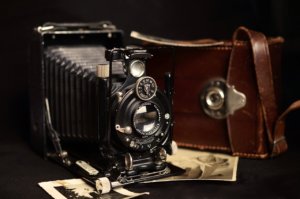
How do you share your pictures?
The camera will grow with more megapixels. Do we need it? Is the treatment too overpowering for you? Consider this: My first digital camera of 2004 was a 6-megapixel Canon 10D. I easily made prints to 30×40 inches (on canvas which is a bit generous). They still hang in my home and within the homes of the customers who purchased them and some photographs of themselves.
What should I look for when buying a camera?
Shopping for cameras can be very confusing. The more options you have, the lesser likelihood it is that you will. In my guide, I have included many things that will help you decide if it’s the best camera available this season. To keep things simple the best thing you have to consider are the camera’s capacity, weight and its camera quality.
Micro Four Thirds Cameras
Micro Four Thirds is a type of mirrorless camera which covers a wide variety of styles and options. They have a common feature: the size of the sensor. They’re like a mini interchangeable lens camera with smaller, lighter and cheaper lenses. Having the smaller camera is however not always good for everything as it restricts controls and a smaller grip may hamper those with heavier hands. We’ll discuss more below why Sensor size is important. However we don’t know much about it until we show that a Micro Four 3/3 camera is like a’mini’ camera. Micro 4/3 cameras are still popular choices for beginners up to professional photographers.
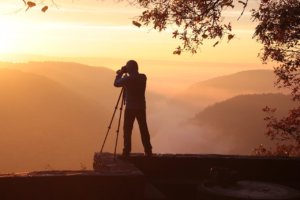
Mirrorless cameras
Mirrorless cameras offer better functionality making photo taking easier than conventional DSLRs. They are normally smaller and lighter than a DSLR camera and are a great choice when travelling. In spite of this, they suffer low battery longevity and a shooting experience that is a little soulless. It also features APS-C or complete frame sensors they are more reliable. I think mirrorless cameras are the future and DSLRs are a dying breed. That’s not to say that the technology isn’t perfect yet. Mirrorless cameras are a well known case of an minicomputer.
5 most important factors when choosing a new camera
Image quality is essential when buying cameras. The camera should be low and compact with a comfortable ergonomic layout. If you can not find a store that holds their own camera you should use a website based on reviews. The advancement of the camera industry is really happening at the moment that we all have to buy in a new camera. There are bargains to be found with a previous model, but try to avoid anything older than this. There may be second-hand. We wrote a guide for buying and selling used camera equipment which may prove useful.
Compact cameras (aka point-and-shoot cameras)
Compact cameras are hugely popular and for good reasons. Their compact dimensions make them easily carryable and practical on your daily commute. A strictly defined point-and-shoot camera is one with a fixed lens (easier to replace if required) This limitation greatly simplifies the photographic. A small camera will normally make you carry it with you when you take it home. It is important to choose a compact camera of more photographic quality or features in your phone that your phone does not have.
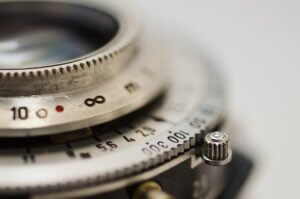
Bridge cameras
Bridge Cameras are popular with enthusiast photographers that don’t want to worry about changing lenses but still want the flexibility of long range zoom. Most common are small camera – camera sensors. It rarely has an optical viewfinder opting only for an electronic viewfinder and the front LED screen for photography. It is an excellent all-in-one choice but without the bulk of a full-size DSLR or large DSLR. They seldom feature a viewfinder instead using an EVF and LCD screen.
8 things to consider when buying a new camera
It’s not the usual list on the features I look for when purchasing cameras. I find most cameras have extremely similar features with a handful of variations. It’s more important to decide which camera you should buy right now? This is a quick summary on those eight things that you’ll need to consider read further for details.
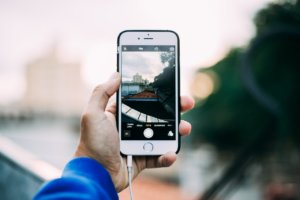
What is your budget?
Budget may play big role in choosing the best digital cameras for you. The bigger the camera more bells or whistles the higher the price too. I’ll start the bottom and work up to the bottom of camera’s lowest and most e.g. cost.
DSLRs – Digital Single Lens Reflex
Only the very physical differences between a DSLR and a mirrorless camera are significant. Of all the devices, DSLRs will still give more choices than any other digital camera. But things are changing. There are lots of brands to choose from. The cost ranges from starter kits (camera body and lens) at about $500 to super advanced kits at over $6000 USD. The only difference between them is the size of the mirrorless camera and the quality of the lens available for a photographic image is the size of the lens. Find the best brand you really want and the model can be all you have.
Intermediate and advanced
What feature will we need beyond the basic? Would anyone like shoot star paths? It would be best to have a video camera with a built-in intervalometer in mind. Have an idea for video making? Read review about cameras that excel in that area. Remember that others can too take a look at stuff like weight physical size and megapixel counts. Should I move to full frame? This is the first of seven questions to ask before upgrading to a full telephoto body so you know it is time you get a chance to upgrade. There are several different types of sensors in each camera.
Compact cameras (point & shoot and bridge)
The best digital camera would be a compact camera if. you wanted something small enough to slip in a pocket or into a handbag. This types of cameras often has less options for the set of exposures. Some medium to higher-end ones shoot in RAW format and have manual shooting modes. I own a Fuji X100 and I aspire to have a comparable model. But it lacks a zoom lens so it’s not suitable for shooting and it’s somewhat price-oriented with US1299.25 USD. For me they’re essentially my second camera on my main machine in the Fuji – X-T3.
Mirrorless and four-thirds cameras
The mirrorless camera offers more than the first in that range. Some brand’s models include many mirrorless cameras that can compete with fullsize DSLR cameras on image quality. The prices vary widely depending on the features and image sensor for the camera. You paid an additional charge for the compact camera and a mirrorless camera. If you need the lowest down on these cameras please check this article I wrote about it. The more expensive class was the Full Frame mirrorless with a camera that can rival the DSLR.
Beginners cameras
If you haven’t taken pictures in long time I wouldn’t recommend using a DSLR. Instead look at either an entry-level DSLR, mirrorless camera or even a decent compact camera with manual settings. That will give you a way to start at a lower price point so you’ll find out if you appreciate it before investing a lot of money. See list of best beginner camera cameras below.
Are you a beginner, intermediate or advanced photographer?
How you answer this question can get you more information about a digital camera with its features. Notice that I’m not saying Professional here because I suppose you’d usually already know which type of cameras you wanted and would not have needed.
